Awareness of the health risks linked to smoking is higher than ever, and more people are seeking effective ways to understand and change their habits in 2025. Yet, many smokers struggle to track their cigarette use accurately, often underestimating how much they smoke or missing key triggers that drive their behaviour.
Modern technology offers a solution. A smoking monitor provides real-time insights and data, making it easier to spot patterns, measure progress, and support meaningful change. These devices help you transform vague intentions into clear, actionable steps.
In this guide, you will learn how to monitor your smoking behaviour, interpret your data, and use technology to support quitting or cutting down. We will cover the latest types of smoking monitors, a step-by-step tracking process, tips for understanding your results, proven habit improvement strategies, and the future of smoking monitoring.
Understanding Smoking Monitors: Types and Technology
Awareness of personal smoking habits is the first step towards meaningful change. A smoking monitor offers a practical solution for those seeking reliable, actionable insights. These devices provide more than just numbers, they empower users with objective data that supports habit transformation.
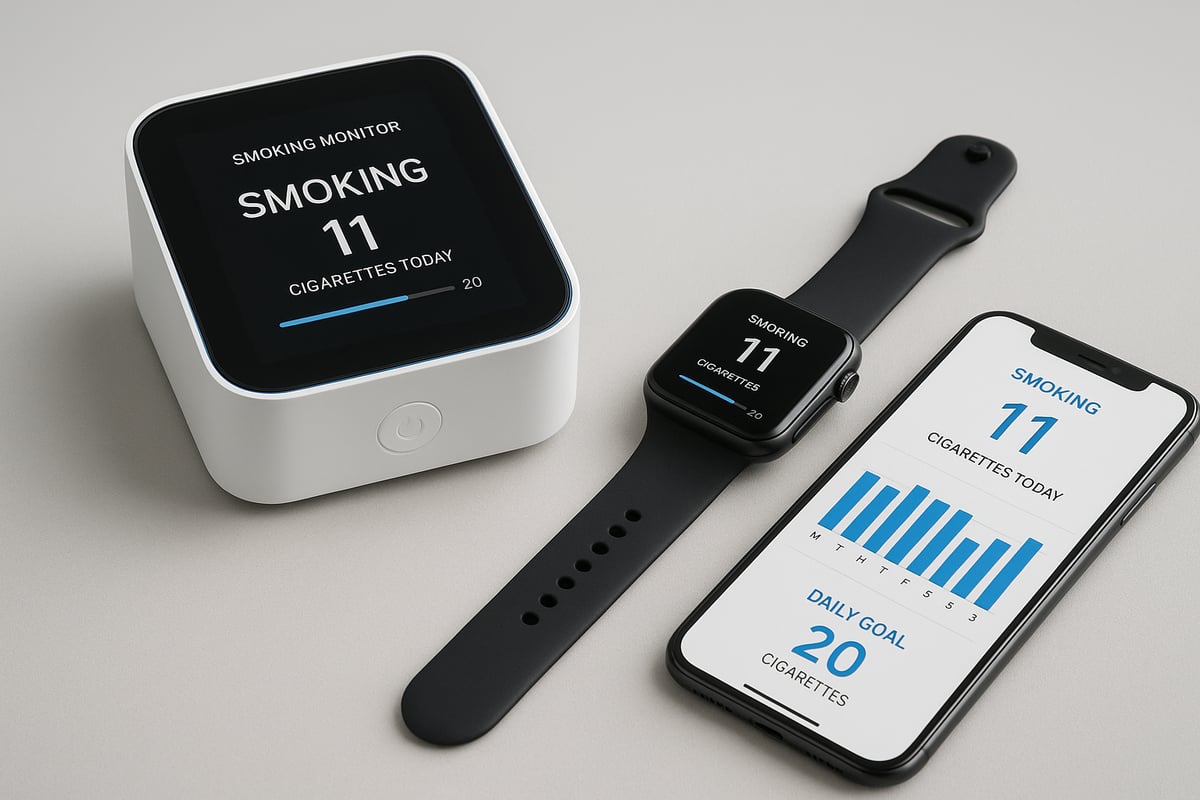
What Are Smoking Monitors?
A smoking monitor is a device or system designed to objectively track and record smoking events. Unlike self-reporting methods, which often rely on memory and honesty, these monitors capture real-time data with minimal user input. This shift from subjective diaries to device-based tracking dramatically improves accuracy.
The primary purpose of a smoking monitor is to provide users with transparent feedback on their behaviour. By using technology such as wearable sensors or mobile apps, individuals gain a clearer picture of their habits. This objective data is essential for anyone looking to reduce or quit smoking, as it uncovers hidden patterns and supports evidence-based decisions.
Types of Smoking Monitoring Devices in 2025
In 2025, the range of smoking monitor options has expanded significantly. Wearable sensor systems, such as respiratory inductance plethysmographs and hand gesture sensors, detect physical cues related to smoking. Smart cigarette cases and puff-tracking devices automatically log each cigarette or puff taken.
Mobile applications, now more sophisticated, offer both manual and automatic event logging. Biomarker-based monitors, like carbon monoxide breath analysers, provide physiological feedback. Many of these devices integrate directly with smartwatches and fitness trackers for seamless user experience. For a deeper look at the underlying technology, see this Smoking sensor technology overview.
How Smoking Monitors Work: Key Features and Capabilities
A modern smoking monitor uses advanced detection methods to identify smoking events. These may include monitoring breathing patterns, tracking specific hand gestures, or analysing environmental cues. The device collects data in real time, often providing instant feedback through a connected app or wearable.
User experience is central to adoption. Most devices are designed for minimal disruption, allowing daily routines to continue uninterrupted. Data is securely stored, with options to sync to health platforms for broader wellness tracking. Privacy features ensure users retain control over their information.
Benefits of Using Smoking Monitors
The advantages of a smoking monitor are clear. Studies show self-reporting can understate cigarette use by up to 50 percent, while device-based tracking offers much greater accuracy. This objective data enables truly personalised feedback, supporting targeted interventions and ongoing motivation.
Beyond individual benefits, smoking monitor data supports research and clinical studies, helping to advance public health knowledge. The combination of accuracy, accountability, and actionable insights makes these tools invaluable for anyone serious about changing their smoking habits.
Setting Up and Using a Smoking Monitor: Step-by-Step Guide
Embarking on your journey to better health starts with the right tools. Setting up a smoking monitor is a straightforward process, but choosing the best device for your needs and using it consistently is crucial for meaningful progress. This guide will walk you through every step, from selection to troubleshooting, ensuring you get the most accurate data and support for your goals.
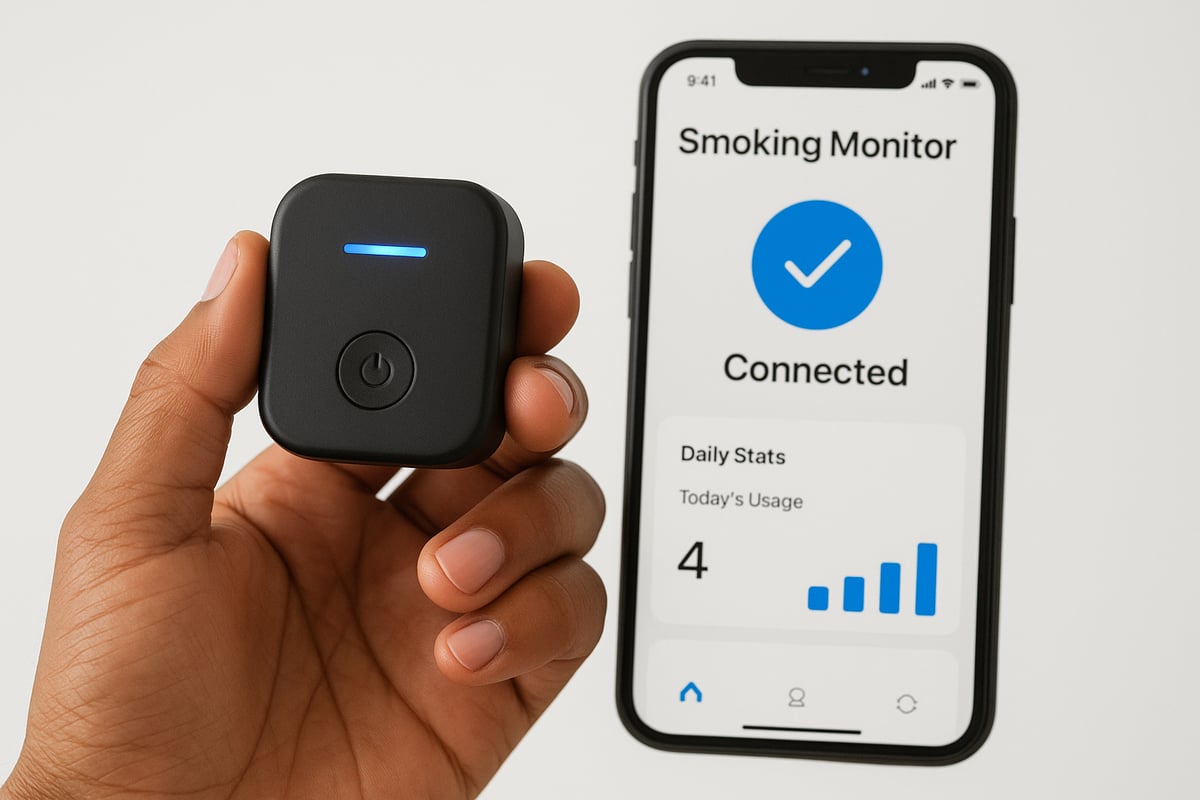
Choosing the Right Smoking Monitor for Your Needs
Selecting the ideal smoking monitor begins with understanding your personal goals. Are you aiming to quit completely, reduce your intake, or simply gain awareness of your habits?
Consider these factors as you compare devices:
| Feature | Importance for Users | Example Considerations |
|---|---|---|
| Accuracy | High | Reliable event detection |
| Comfort | Essential for daily use | Wearable fit, portability |
| Features | Varies | Real time feedback, app sync |
| Price | Budget dependent | Upfront cost, subscriptions |
| Support | Ongoing benefit | Customer service, updates |
Think about how the smoking monitor fits your lifestyle. Some prefer discreet wearables, while others like app based options. Reviewing product specifications and user reviews will help ensure you choose a device that supports your journey.
Initial Setup and Calibration
Once you have chosen your smoking monitor, begin by unboxing and charging the device fully. Attach wearable sensors comfortably, or download the relevant app if your monitor is software based.
Follow the manufacturer’s instructions for calibrating the device to your unique breathing and hand movement patterns. This step is vital for accurate data collection. Secure your data with strong privacy settings and password protection.
For a detailed walkthrough on device setup, you can consult the Setting up your sensor guide, which provides clear, step by step instructions tailored for various monitor types.
Daily Use: Logging and Tracking Smoking Events
Consistency is key when using a smoking monitor. Many devices automatically detect smoking events using sensors, while others require manual logging within an app.
For best results:
- Wear or carry your monitor at all times when you might smoke
- Record additional details such as location, mood, or social context
- Review daily summaries to maintain awareness
Avoid common pitfalls like forgetting to wear the device or missing manual entries. Over time, you’ll gain a clearer picture of your smoking patterns.
Interpreting Monitor Data
Your smoking monitor collects a range of metrics including frequency, duration, inhalation depth, and breath hold time. Review these figures in daily, weekly, and monthly reports.
Look for trends such as increased activity at certain times or in specific situations. Comparing objective data to your own perception often reveals surprising insights, helping you identify triggers and opportunities for improvement.
Regularly reflecting on your data empowers you to make informed decisions about your habit change strategies.
Integrating Smoking Data with Other Health Apps
Many smoking monitor devices sync seamlessly with fitness trackers and health platforms. This integration allows you to combine smoking data with information on physical activity, sleep quality, and stress levels.
Holistic health insights can help you understand the broader impact of smoking on your wellbeing. Use this data to set more comprehensive goals and adjust your approach as your habits evolve.
Connecting your monitor to other apps also simplifies progress tracking and can provide additional motivation.
Troubleshooting Common Issues
Even the best smoking monitor can encounter occasional problems. Device errors and connectivity issues are not uncommon, but most can be resolved by restarting the device or updating the app.
To ensure accurate event detection:
- Recalibrate sensors regularly
- Check for software updates
- Clean device components as instructed
If problems persist, contact customer support or engage with user communities for assistance. Staying proactive with maintenance ensures your smoking monitor continues to provide reliable data and supports your path to healthier habits.
Analysing Smoking Patterns: Turning Data into Insights
Understanding the data from your smoking monitor is essential for making informed decisions about your health. Analysing these patterns transforms raw numbers into practical insights, helping you take control of your smoking habits.

Key Metrics to Track and Their Significance
A smoking monitor captures a range of metrics that reveal much more than simple consumption. Common measurements include cigarettes or puffs per day, time of use, inhalation depth, and breath hold duration.
These metrics provide a factual baseline for your current habits. For example, tracking frequency and duration can highlight patterns you might not notice through self-report. Comparing your results to recommended reduction targets allows you to set realistic expectations.
By reviewing this data regularly, you gain a deeper understanding of how your smoking behaviour fluctuates. This objective feedback is crucial for anyone aiming to reduce or quit.
Identifying Triggers and High-Risk Situations
Your smoking monitor can help identify when and why you smoke most often. Analysing time stamps and context notes reveals triggers such as stress, social gatherings, or daily routines.
For instance, you might notice an increase during work breaks or after meals. Emotion tracking within some devices can link spikes in usage to certain moods or stressful periods.
Recognising these high-risk situations is the first step in developing strategies to avoid or manage them. With this insight, you can create targeted plans to minimise exposure to triggers and reduce unwanted habits.
Setting Personalised Goals Based on Data
Data collected by your smoking monitor enables you to set goals that are both personalised and achievable. Start by establishing a baseline using your initial readings, then set SMART goals—specific, measurable, attainable, relevant, and time-bound.
For example, if your monitor reports 15 cigarettes daily, aim to reduce this by two each week. Adjust your objectives as your progress is tracked, using the device’s feedback to stay motivated.
Personalised targets based on your actual data make your journey more manageable and less overwhelming, increasing your chance of long-term success.
Monitoring Progress Over Time
A smoking monitor provides visual trends to track your progress. Daily, weekly, and monthly summaries let you see reductions, plateaus, or relapses at a glance.
Celebrating milestones, such as a week without smoking or a significant drop in consumption, can boost motivation. If you notice a plateau, use the data to reassess your strategies and identify any new patterns.
Consistent monitoring keeps your efforts transparent and helps you maintain focus. These insights also remind you of your achievements, making it easier to stay committed.
Sharing Data with Healthcare Providers or Support Groups
Sharing information from your smoking monitor can enhance accountability and support. Evidence-based discussions with clinicians are more productive when backed by real data, leading to tailored advice and interventions.
Many individuals also benefit from sharing their progress with support groups, friends, or online communities. This transparency fosters encouragement and constructive feedback.
For examples of how smoking monitor data has empowered real users and support networks, see these case studies of vape monitoring. Learning from others’ experiences can inspire you to remain engaged and resilient in your own journey.
Strategies to Improve Smoking Habits Using Monitors
Adopting a smoking monitor can transform how individuals approach habit change. These devices offer more than simple tracking, providing actionable feedback and personal insights. By leveraging technology, users gain tools to set realistic goals, stay accountable, and sustain motivation throughout their journey.
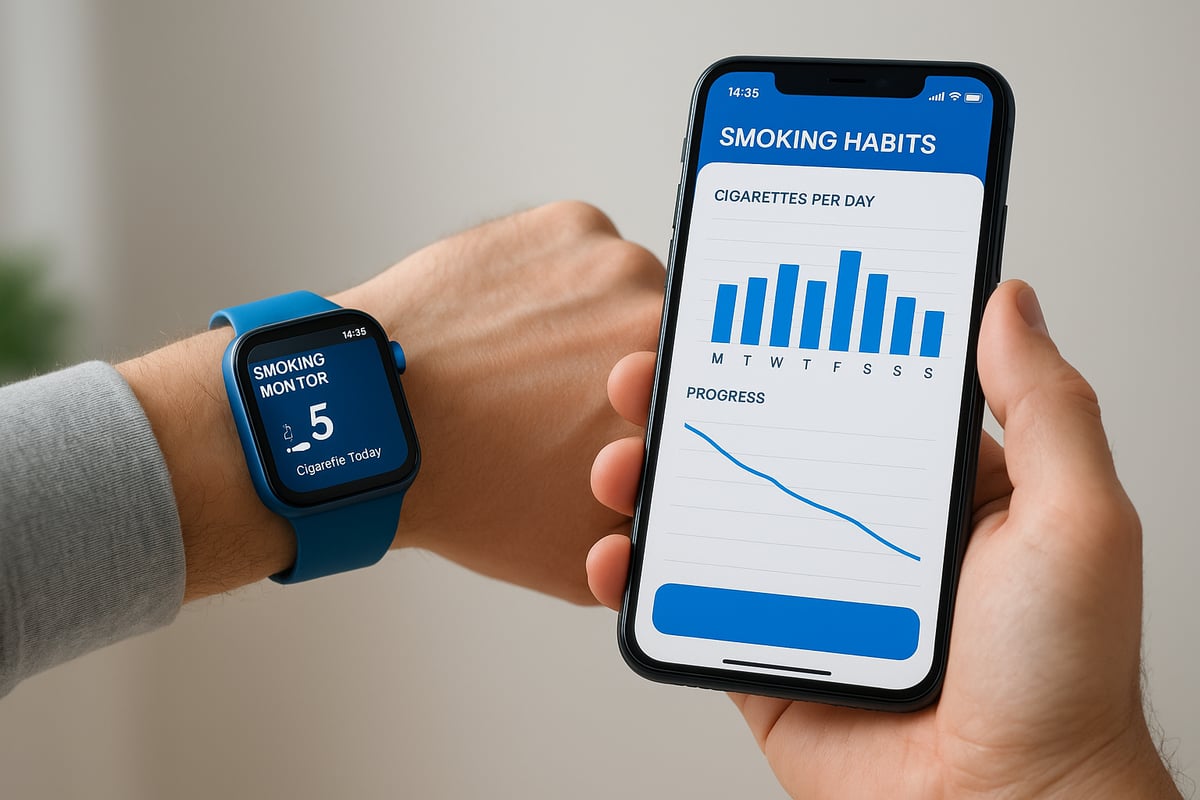
Behavioural Change Techniques Supported by Monitors
A smoking monitor supports a range of behavioural change techniques, making it easier to understand and modify smoking patterns. Self-monitoring is central, as users receive real-time data on their consumption. This feedback loop encourages reflection and fosters greater awareness of triggers.
Key techniques enhanced by a smoking monitor include:
- Cue avoidance: Identifying and steering clear of situations that prompt smoking
- Positive reinforcement: Setting rewards for meeting reduction targets
- Mindfulness integration: Linking data trends to emotional states
For those interested in how these devices capture such detailed behaviours, the Smart sensor technology explained page offers valuable background on underlying sensor systems.
Using Real-Time Alerts and Feedback
A core advantage of a smoking monitor is its ability to provide real-time alerts. These notifications can prompt users when they approach personal limits or encounter high-risk periods. Customisable reminders help reinforce goals and support conscious decision-making.
Best practices for maximising real-time feedback include:
- Setting up alerts for peak craving times
- Personalising messages for motivation
- Reviewing post-event reflections to identify progress
Immediate feedback transforms passive tracking into active habit management. This approach increases self-awareness and builds resilience against relapses.
Combining Monitors with Evidence-Based Interventions
Integrating a smoking monitor with established interventions enhances overall effectiveness. Many users pair their device with nicotine replacement therapies, prescription medications, or behavioural counselling. Digital cessation programmes often link seamlessly with monitor data for tailored support.
Benefits of combining a smoking monitor with interventions:
- Provides a comprehensive view of progress
- Enables health professionals to deliver targeted advice
- Supports adaptive goal setting based on real-world data
This synergy between technology and proven methods increases the likelihood of successful habit change.
Building Accountability and Social Support
Accountability plays a vital role in sustaining behaviour change. A smoking monitor enables users to share their progress with trusted friends, family, or support groups. Many devices feature group challenges or leaderboards to foster healthy competition.
Ways to boost accountability using a smoking monitor include:
- Sharing weekly reports with a support network
- Joining online communities for encouragement
- Participating in group reduction milestones
Social support helps maintain motivation and provides a sense of shared achievement, making the journey less isolating.
Overcoming Barriers to Habit Change
Despite their advantages, users may encounter obstacles during their transition. Device fatigue, waning motivation, or stressful life events can cause setbacks. A smoking monitor helps by offering tailored strategies based on real-time data.
Strategies to overcome barriers:
- Adjusting goals to remain realistic
- Using data insights to understand relapse triggers
- Seeking additional support when needed
Adapting approaches based on feedback from the smoking monitor can lead to long-term success, even after setbacks.
Case Studies: Success Stories and Lessons Learned
Real-world experiences highlight the impact of using a smoking monitor. Individuals who consistently track their habits often report increased self-control and reduced consumption. Success stories frequently cite the value of personalised feedback and ongoing support.
Key lessons from case studies:
- Consistency in device use drives better outcomes
- Engagement with support networks enhances progress
- Learning from setbacks is crucial for sustained change
These examples demonstrate that with the right strategies and a reliable smoking monitor, meaningful improvement is achievable.
The Future of Smoking Monitors: Trends and Innovations for 2025
The future of the smoking monitor is set to transform how individuals approach smoking cessation and harm reduction. In 2025, new technologies are emerging to make tracking and changing smoking habits more efficient, personalised, and accessible. These innovations not only improve the accuracy of monitoring but also empower users with actionable insights and greater control over their health journey.
Advances in Wearable and Non-Intrusive Monitoring Technology
Recent developments in wearable technology have made the smoking monitor smaller, smarter, and more comfortable. Devices now feature improved sensor accuracy and longer battery life. They blend seamlessly with everyday wearables, such as smartwatches and fitness trackers, minimising disruption to daily routines.
Non-intrusive designs, including flexible patches and discrete rings, offer users comfort and ease of use. The following table summarises key advancements:
| Feature | 2020 Devices | 2025 Devices |
|---|---|---|
| Sensor Accuracy | Moderate | High |
| Battery Life | 1-2 days | 5-7 days |
| Integration | Limited | Full with wearables |
| Comfort | Bulky | Non-intrusive |
These changes mean the smoking monitor is more appealing, reliable, and effective for long-term habit tracking.
AI and Predictive Analytics in Smoking Behaviour
Artificial intelligence is revolutionising the smoking monitor landscape by enabling predictive analytics and personalised interventions. Machine learning algorithms analyse usage patterns, detect high-risk situations, and offer timely suggestions to prevent relapse.
Modern smoking monitor systems can identify subtle triggers, such as changes in breathing or gestures, and send real-time alerts. Researchers are also exploring smartphone-based acoustic sensing, as seen in acoustic sensing for smoking detection, to identify smoking events in complex environments like driving. This integration of AI helps users anticipate challenges and respond proactively to cravings.
Enhanced Data Privacy and Security
With the growing sophistication of the smoking monitor, data privacy and security have become top priorities. Devices now feature end-to-end encryption, ensuring that personal health data remains confidential.
Users have greater control over data sharing, with clear consent protocols and transparent privacy settings. Compliance with regulations such as GDPR is standard, and manufacturers are required to disclose how data is stored and used. These measures help build trust, making it easier for individuals to adopt smoking monitor technology with confidence.
Integration with Broader Health and Wellness Ecosystems
The modern smoking monitor no longer operates in isolation. New devices and apps can sync with fitness trackers, sleep monitors, and stress management platforms, providing a holistic view of user health.
This integration enables users to see correlations between smoking behaviour and other health metrics. Healthcare providers can access comprehensive data, supporting personalised treatment plans. Collaboration with insurers and public health campaigns further enhances the impact of the smoking monitor, making it a vital part of the broader wellness ecosystem.
Accessibility and Affordability of Smoking Monitors
Accessibility and affordability are central to the future of the smoking monitor. Prices are falling as technology matures, and open-source solutions are emerging to reach underserved populations.
Manufacturers are designing user-friendly interfaces and offering language support for diverse communities. Policy initiatives, such as those highlighted by the FDA and NIH call for smoking cessation innovation, are driving broader adoption and funding for research. These efforts aim to ensure that anyone seeking to track and improve their smoking habits can benefit from the latest advances in smoking monitor technology.
Ethical, Social, and Practical Considerations in Smoking Monitoring
Understanding the ethical, social, and practical issues surrounding the use of a smoking monitor is crucial for both users and providers. As these devices grow in popularity, it is vital to address privacy, reduce stigma, ensure equitable access, and promote collaboration across sectors.
Privacy Concerns and Informed Consent
When using a smoking monitor, privacy and informed consent must be prioritised. Users need clear, accessible information about what data is collected, how it is stored, and who can access it. Transparent privacy policies help build trust and empower individuals to make informed decisions.
Best practices in privacy include:
- Gaining explicit user consent before any data collection
- Providing options to control data sharing and deletion
- Using end to end encryption for all health information
Regulatory compliance, such as adherence to GDPR, is essential. Ultimately, a smoking monitor should always respect the autonomy and rights of each user, ensuring ethical use of sensitive health data.
Addressing Stigma and Supporting Positive Change
Adopting a smoking monitor can be empowering rather than stigmatising. Language and support strategies play a significant role in how individuals perceive their journey towards change. By framing monitoring as a tool for self improvement, users can shift from feeling judged to feeling supported.
Healthcare professionals and support networks must:
- Use non judgemental, encouraging language
- Focus on progress and effort, not just outcomes
- Promote open conversations about challenges and setbacks
When stigma is reduced, individuals are more likely to engage with a smoking monitor and stay motivated throughout their behaviour change process.
Impact on Vulnerable Populations
Ensuring that every user can benefit from a smoking monitor requires addressing barriers faced by vulnerable groups. Accessibility features, such as simple interfaces and language support, make technology usable for people with disabilities or limited digital literacy.
Cultural tailoring and age appropriate resources also enhance effectiveness. For example, studies on mHealth intervention for smoking cessation highlight the value of targeted programmes for specific populations. By considering these factors, a smoking monitor can better support diverse needs and promote health equity.
Collaboration Between Technology Providers, Healthcare, and Policy Makers
A coordinated approach is essential for maximising the benefits of a smoking monitor. Technology providers must work closely with healthcare professionals to ensure devices are safe, effective, and user friendly. Policy makers play a key role in setting standards and funding research.
Successful collaboration may include:
- Joint development of guidelines for digital health tools
- Integrating device data into clinical practice
- Supporting public awareness campaigns
Research, such as Digital health interventions for e-cigarette cessation, demonstrates the potential of partnerships in advancing smoking monitor technology and improving public health outcomes.
After learning how modern smoking monitors can transform the way you track and improve your habits, you might be curious about the technology powering these insights. Understanding how real time detection and data analysis work is key to making informed decisions for your health or your community. If you want to dig deeper into the features and benefits that set advanced monitoring solutions apart, I encourage you to Learn more about how it works. This is a great next step if you are considering implementing smarter tracking or simply want to explore the possibilities for positive change.

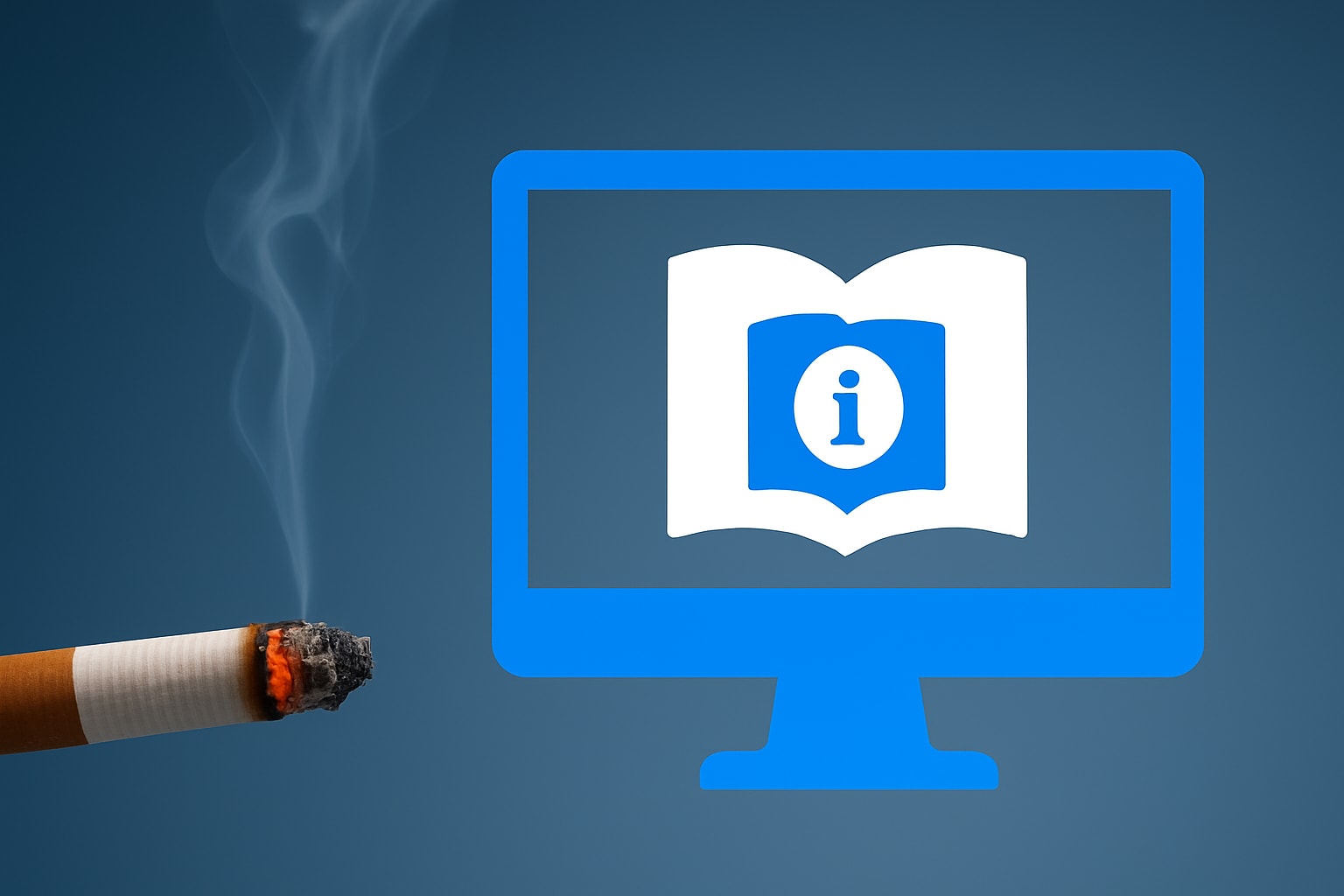
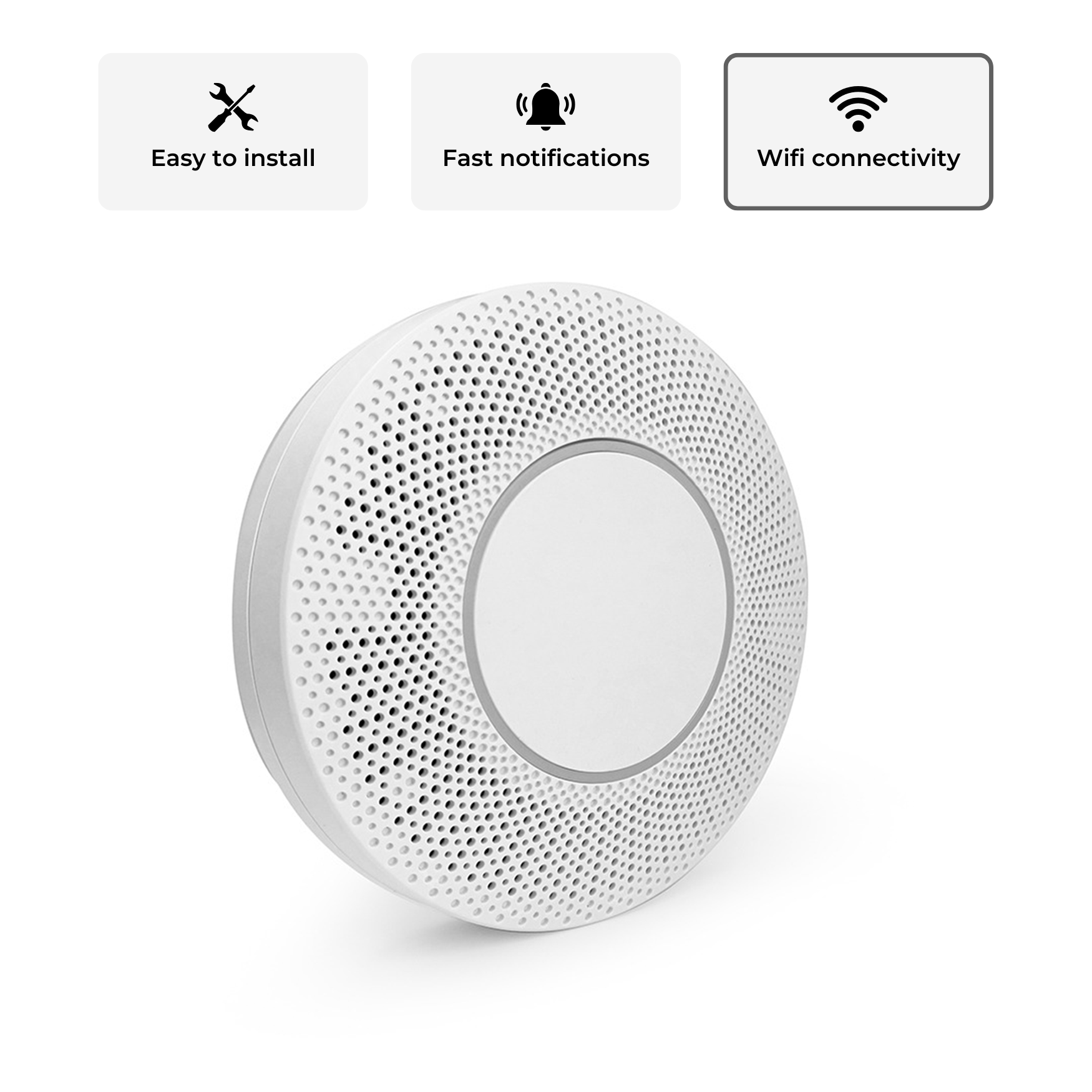
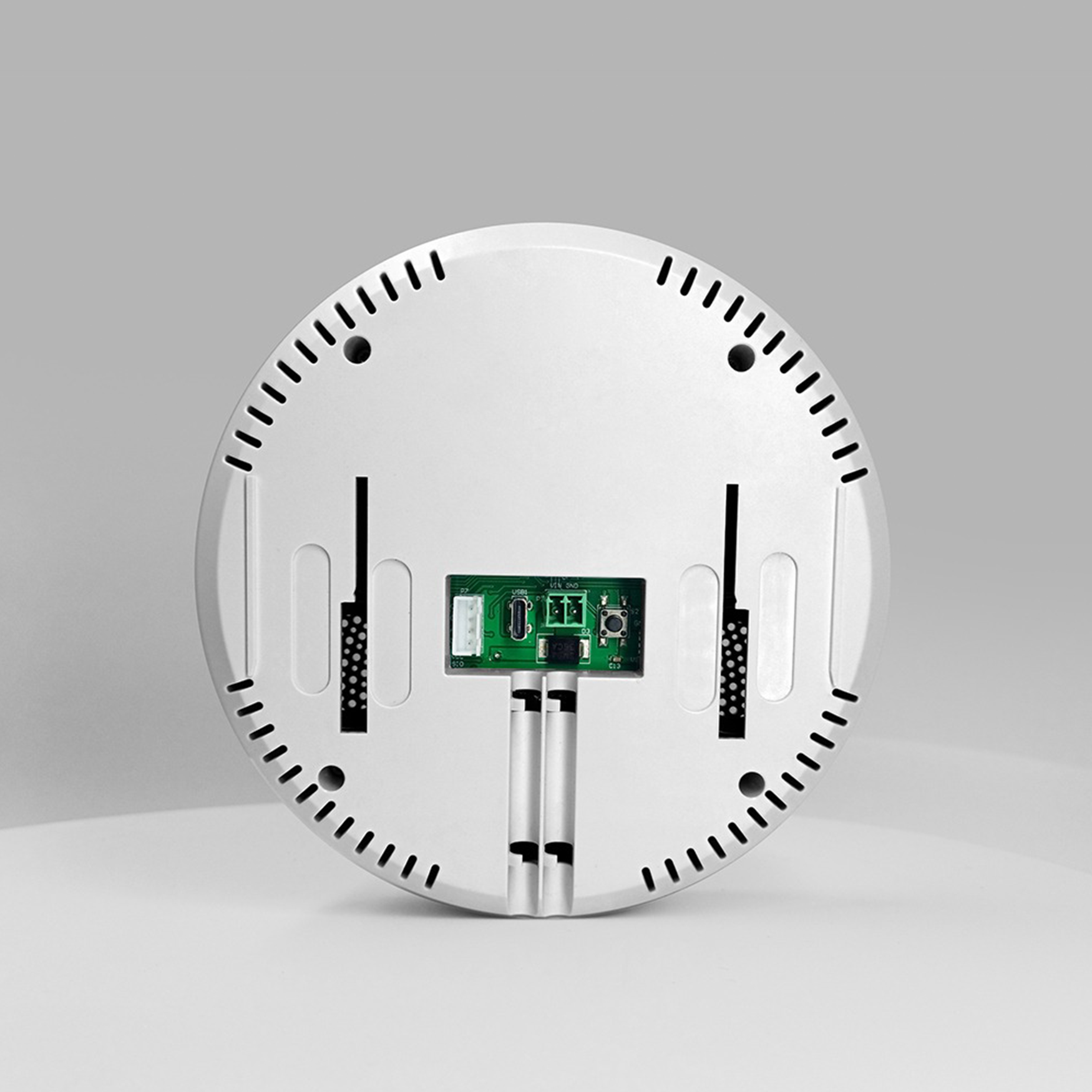

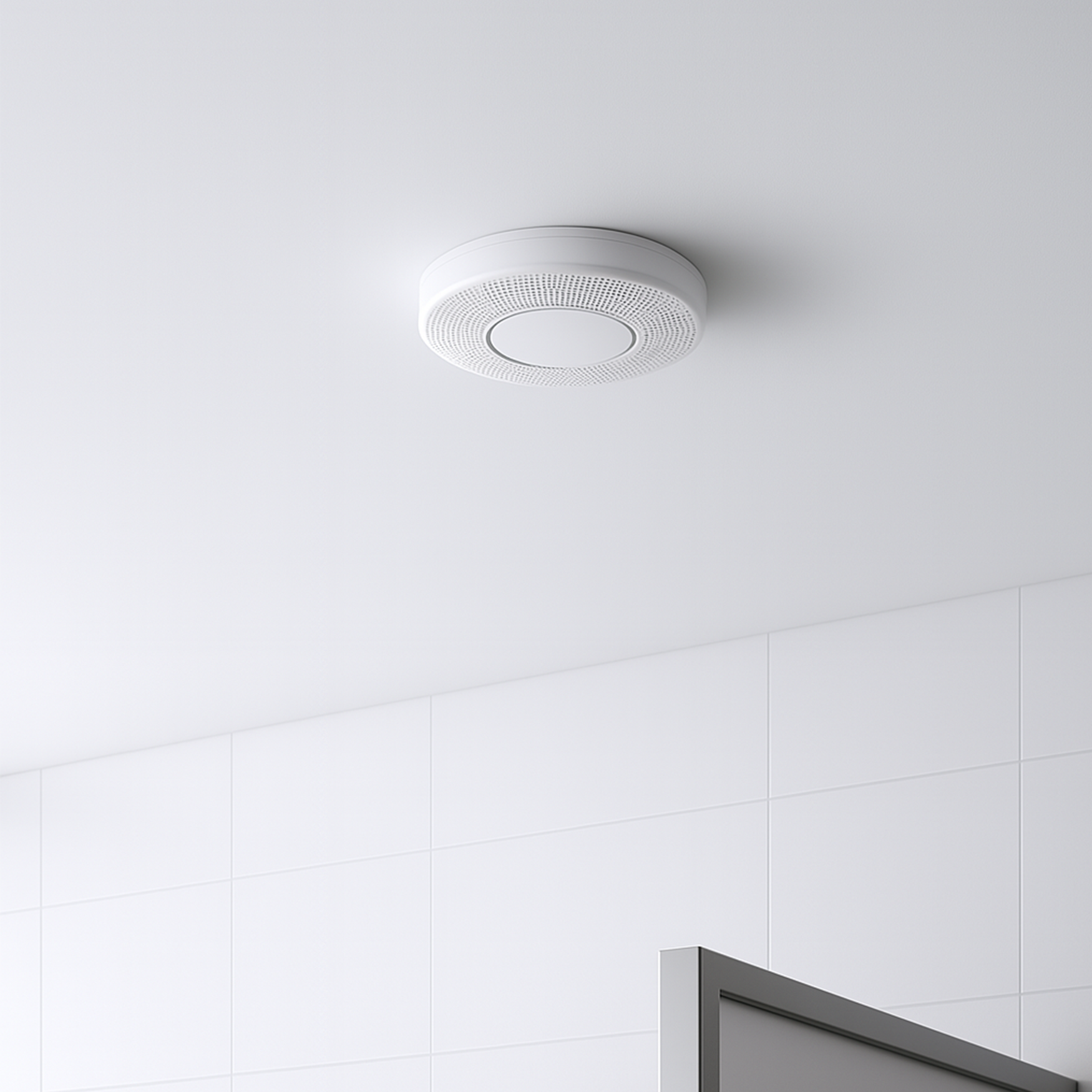
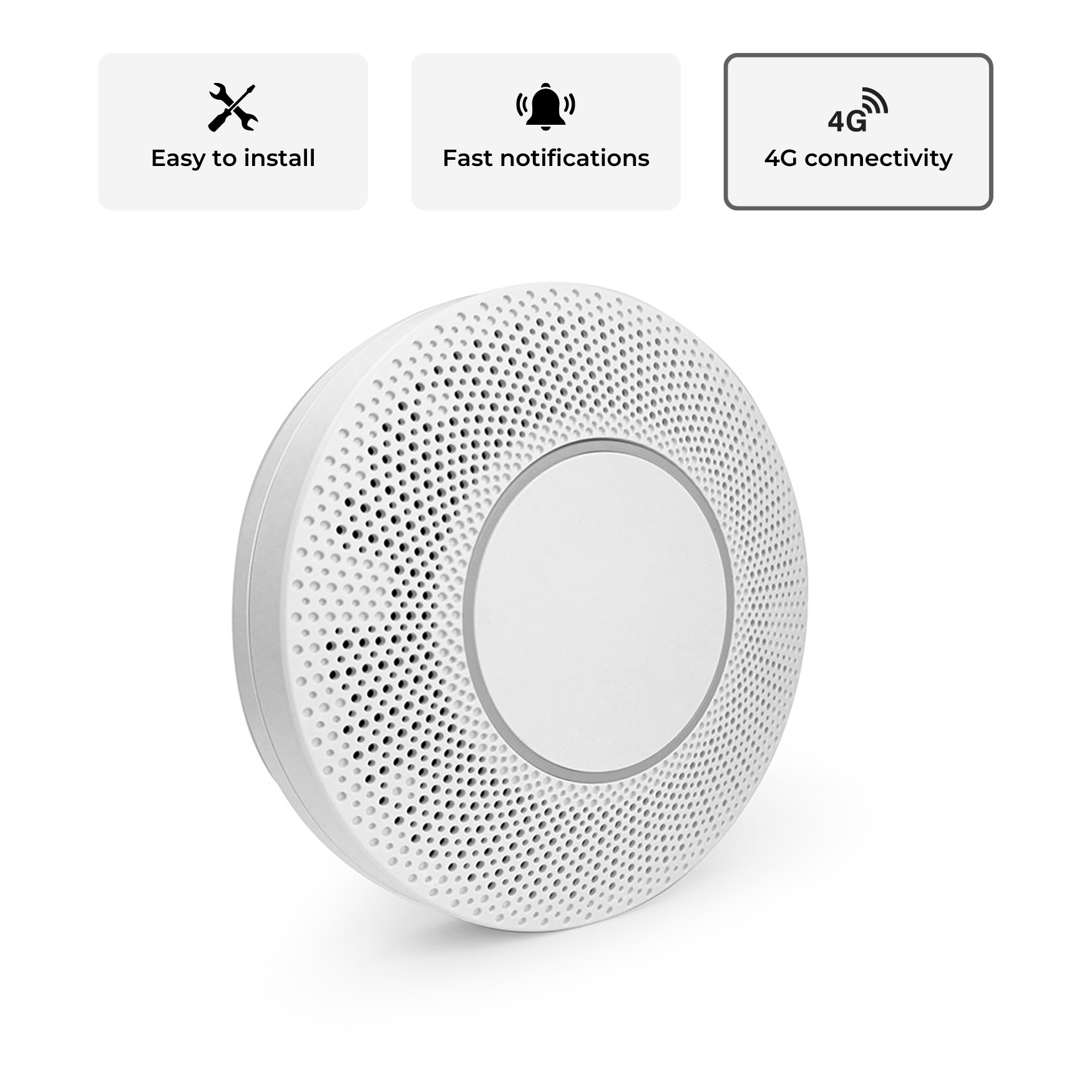

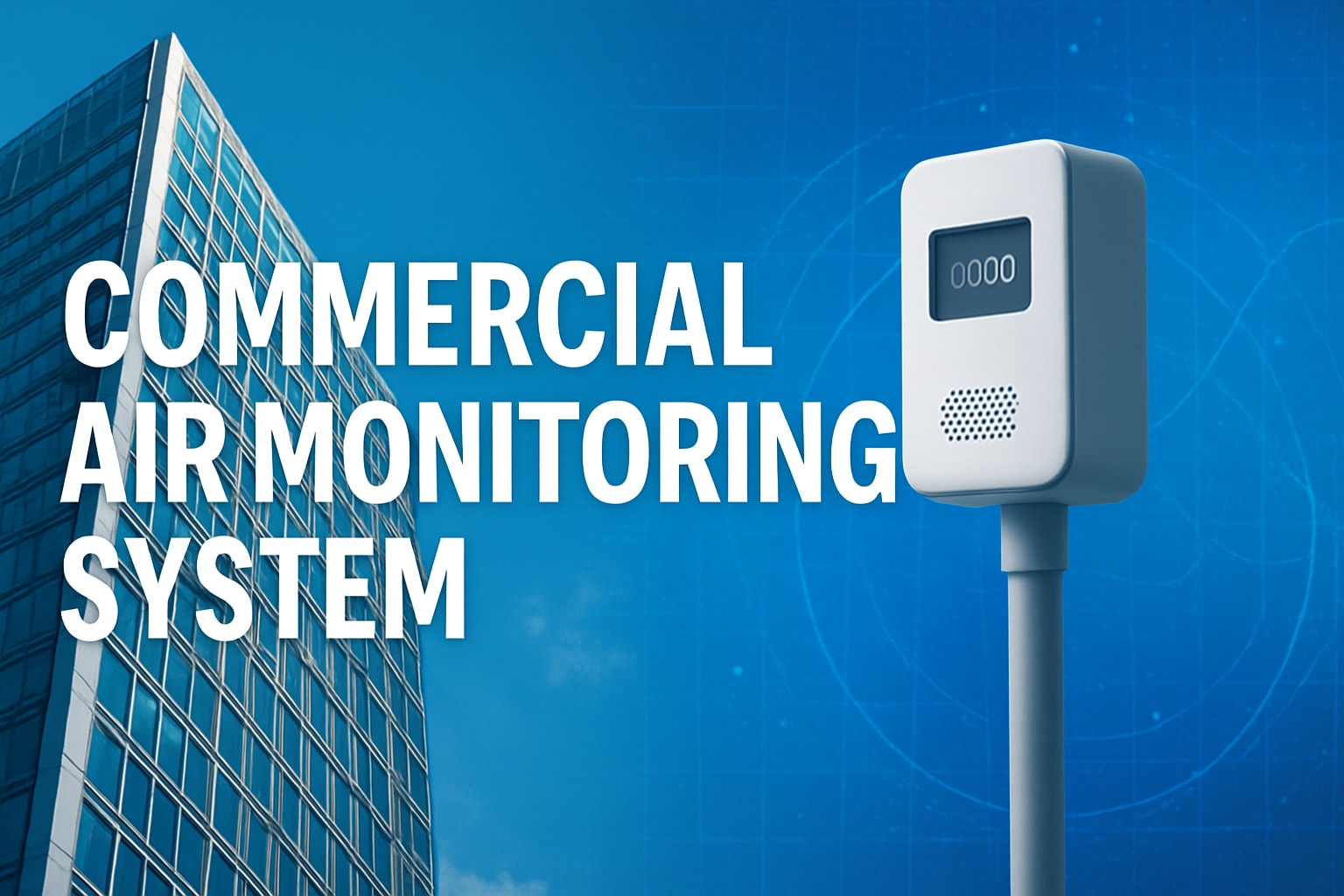


Share:
Smoke Detection Stickers: The Definitive Guide for 2025
Vapour Detector Guide: Your 2025 Handbook for Success